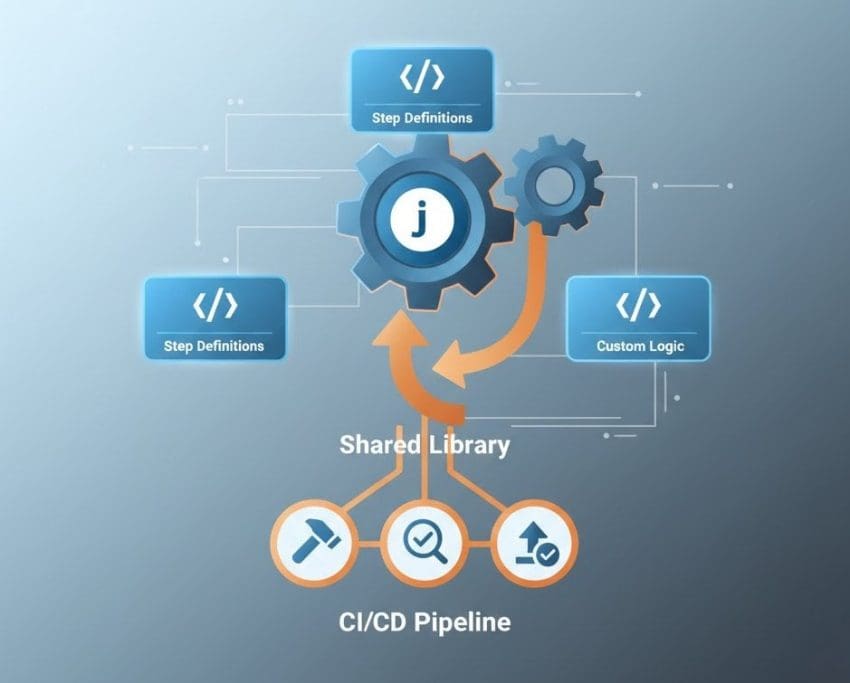When managing multiple CI/CD pipelines across various development teams, repeating the same stages and scripts quickly becomes inefficient. That’s where Jenkins Shared Libraries come into play, a powerful way to centralize and reuse pipeline code across different projects.
Understanding Jenkins Shared Libraries 🧩
In large-scale environments, several teams may follow a similar CI/CD workflow. For instance:
- Static code analysis 🧪
- Build stages 🏗️
- Deployment logic 🚀
Even though these teams might be working on different applications, their Jenkins pipelines often include identical stages with similar logic, especially when using the same language (like Java). Instead of duplicating that code in every Jenkinsfile, Shared Libraries allow defining those common pieces once and reusing them everywhere.
How Jenkins Shared Libraries Work 🔄
A Jenkins Shared Library is essentially a centralized Git repository that stores reusable pipeline code. Jenkins pipelines can then import and invoke functions or stages from this shared library whenever needed.
Here’s a high-level workflow of how it operates:
1️⃣ Create a GitHub Repository — A dedicated repository is created to host all shared library code.
2️⃣ Define Common Logic — Common stages like build, test, static code analysis, or deployment are added as Groovy scripts inside this repository.
3️⃣ Load the Library in Jenkins — Configure Jenkins to recognize the repository as a shared library under Manage Jenkins → Configure System → Global Pipeline Libraries.
4️⃣ Use It in Pipelines — In a new Jenkinsfile, the library can be loaded using:
@Library('my-shared-library') _Once imported, any function defined in the shared library can be used directly inside the pipeline.
So instead of starting from scratch each time, the team simply calls the shared library code, dramatically reducing setup time and maintaining consistency across all pipelines.
Why Jenkins Shared Libraries Matter 💡
✅ Consistency: Common logic and standards are maintained across all teams.
✅ Reusability: Once defined, functions and pipeline stages can be reused anywhere.
✅ Simplified Maintenance: Updates or fixes made in the shared library automatically benefit all pipelines using it.
✅ Time Efficiency: Eliminates repetitive coding and setup when onboarding new projects.
Real-World Example 🌍
In many organizations, Jenkins acts as the central CI/CD platform. Development teams working on Java-based applications often have pipelines that look alike, running code quality checks, compiling builds, and deploying to environments.
To avoid rewriting the same pipeline logic for each team, a shared library repository is maintained on GitHub.
Whenever a new CI/CD pipeline is created:
- The first step is to check if the required logic already exists in the shared library.
- If available, it’s invoked directly.
- If not, the new logic is added to the shared library for future reuse.
This approach has proven to significantly reduce development time while maintaining a uniform structure across all pipelines.
Wrapping It Up 🎯
Jenkins Shared Libraries bring modularity and scalability to CI/CD automation. Instead of maintaining separate scripts for each team, organizations can centralize the logic, reduce redundancy, and ensure every pipeline follows best practices.
They’re one of the most efficient ways to manage multiple pipelines — allowing DevOps teams to focus on innovation instead of repetition. 💪
To dive deeper… Check out these related topics:

